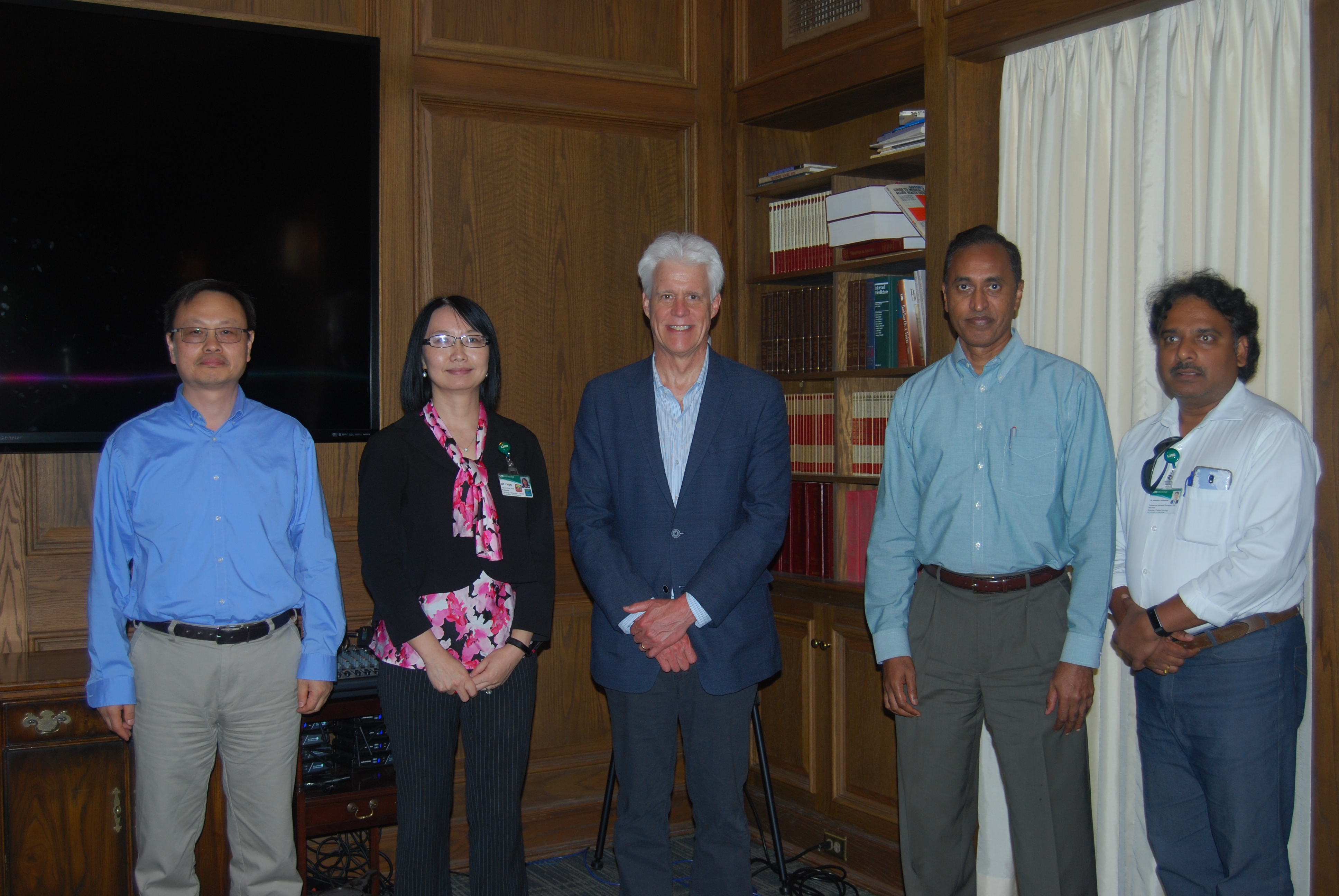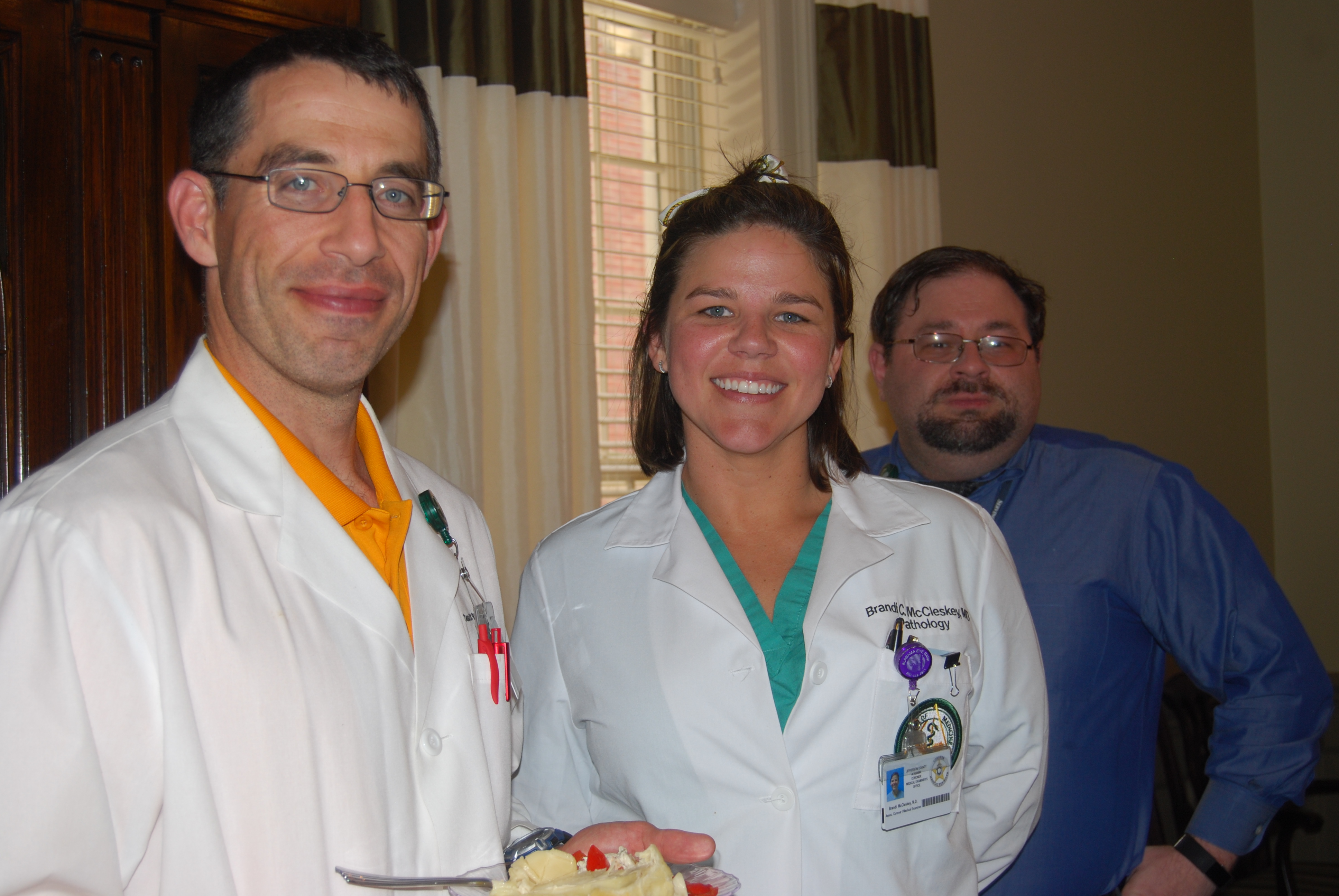UAB Pathology celebrated the 28th year of its Paulette Shirey Pritchett Endowed Lecture in Pathology with an outstanding lecture by Eric N. Olson, Ph.D., Chair of the Department of Molecular Biology at University of Texas Southwestern Medical Center. Olson's lecture, "Understanding Muscle Development, Disease and Regeneration," took place before a full house on Wednesday, May 29, in the Margaret Cameron Spain Auditorium with the Pritchett family in attendance.

"We were thrilled to have Dr. Olson deliver the Pritchett lecture this year," says George Netto, M.D., Chair, UAB Department of Pathology. "His research on muscular dystrophy is world-renowned and his work in regenerative medicine is cutting-edge. He is an ideal expert to provide this distinguished lecture."
Eric Olson is the founding Chair of the Department of Molecular Biology at UT Southwestern Medical Center. He also founded the Harmon Center for Regenerative Science and Medicine at UT Southwestern, which is advancing new strategies for organ regeneration. In addition, Dr. Olson directs the Wellstone Clinical Research Center for Muscular Dystrophy Research at UT Southwestern. He holds the Robert A. Welch Distinguished Chair, the Pogue Chair Distinguished Chair in Cardiac Birth Defects and the Annie and Willie Nelson Professorship in Stem Cell Research.
Dr. Olson and his trainees discovered many of the key genes and mechanisms responsible for development of the heart and other muscles. His laboratory also unveiled the signaling pathways responsible for pathological cardiac growth and heart failure. Olson’s discoveries at the interface of developmental biology and medicine have illuminated the fundamental principles of organ formation and have provided new concepts in the quest for cardiovascular therapeutics. His most recent work has provided a new strategy for correction of Duchenne muscular dystrophy using CRISPR gene editing.
Dr. Olson is a member of the U.S. National Academy of Sciences, the Institute of Medicine, and the American Academy of Arts and Sciences. His work has been recognized by numerous awards, including the Basic Research Prize and Research Achievement Award from the American Heart Association, the Pasarow Medical Research Award, the Pollin Prize, the Passano Award, and the March of Dimes Prize in Developmental Biology. In 2009, the French Academy of Science awarded Dr. Olson the Lefoulon-Delalande Grand Prize for Science. He is among the most highly cited scientists in the world, with his work having been cited over 100,000 times (with an h-Index of 180) in the scientific literature.
Dr. Olson has co-founded multiple biotechnology companies to design new therapies for heart muscle disease. Most recently, he founded Exonics Therapeutics, which is advancing gene editing as a therapy for Duchenne muscular dystrophy. In his spare time, he plays guitar and harmonica with The Transactivators, a rock band inspired by the Texas troubadour, Willie Nelson, who created the Professorship that supports his research.


The lecture is named for Paulette Shirey Pritchett, who was appointed an assistant professor at UAB in 1975 and a surgical pathologist at UAB and later at Cooper Green Hospital. Dr. Pritchett was a highly respected young member of the UAB Department of Pathology when she unexpectedly passed away on August 4, 1984. She was a native Alabamian who obtained her medical degree from the University of Alabama, where she was awarded the Stewart Graves Award and the William Boyd Medal for her demonstrated excellence in pathology. Dr. Robert Pritchett, her husband and a practicing dermatologist, provided financial support to the university in her name to establish this lectureship. We thank Dr. Pritchett and members of his family for making this lectureship possible.